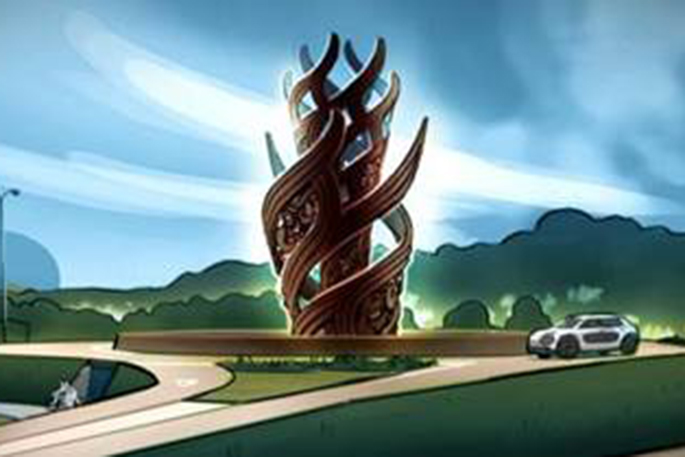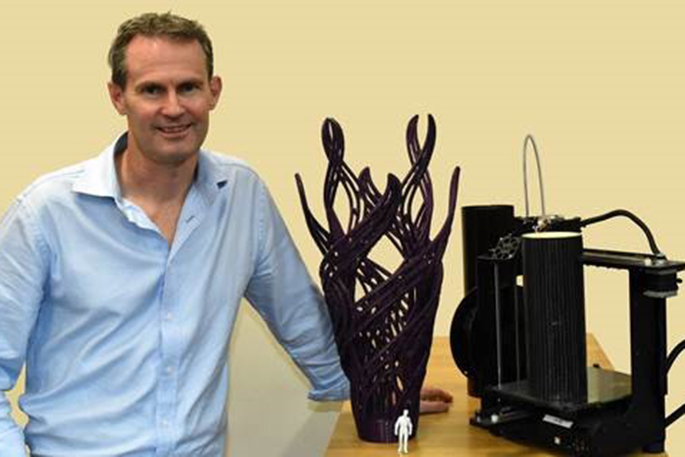Rotorua's 12 metre southern entranceway will be adorned with a sculpture manufactured by local firm Kilwell Fibretube using world-leading 3D printing technology.
The sculpture is expected to take almost 16,500 hours to print on-site at Kilwell's Rotorua factory and cost about $500,000, with contributions from New Zealand Transport Agency, Rotorua Lakes Council public arts budgets, Red Stag and the Civic Arts Trust.
The local innovators approached Rotorua Lakes Council after becoming aware of issues regarding the manufacture of the New Zealand Maori Arts and Crafts Institute-designed sculpture, which is to grace the centre of the new roundabout at Hemo.
It was originally intended to be made of stainless steel but this was found to be problematic and alternatives were being investigated.
'Kilwell approached us so we've been working with them, alongside Te Puia/New Zealand Arts and Crafts Institute and Victoria University's digital design lecturer Derek Kawiti,” says Rotorua Lakes Council Art and Culture Director Stewart Brown.
'It's a fantastic result – this is going to be very innovative and the fact it will be done locally is really great.
'The work will also create a few new jobs so that's an added bonus.”
Kilwell will have 3D printers running 21 hours per day, seven days a week for 79 days, with carbon fibre then layered over the top.
If there are no unexpected delays, the sculpture should be ready for instalment by about late August 2018.
Kilwell Fibretube chief executive officer Craig Wilson says Kilwell prides itself in being a world leader in innovative design and manufactures a diverse range of complex products.
'It's fantastic to be able to showcase the work we do to our local community and be part of the sculpture that will welcome visitors to our city from the south.”
He says the 3D printers will use over 63km of PLA filament in the sculpture's construction.
Weighing just 800kgs, compared to the original 12 tonne estimate, the sculpture can be easily lifted into place once completed.

An artist's impression of the Hemo sculpture.
New Zealand Maori Arts and Crafts Institute head of Te Takapu o Rotowhio- National Stone and Bone Carving School- Stacy Gordine says the design hasn't been compromised as a result.
'The finished product will look exactly like the model thanks to the precision of 3D technology.”
Inspired by the Te Arawa history of tohunga the high priest Ngatoro-i-rangi, who was responsible for the safe passage of his people to Aotearoa, the sculpture will form part of the southern gateway into Rotorua.
"The design is derived from customary whakairo rakau (wood carving) elements, yet is interpreted in a contemporary way,” says Stacey.
Te Puia chief executive Tim Cossar says it is great to be able to fabricate the sculpture locally.
'We always wanted to involve local business and to be able to do this is a fantastic result. It is set to be a stunning piece of art for Rotorua.”



1 comment
Waste
Posted on 09-12-2017 14:26 | By clingon
Half a million dollars? What a waste of money. Better to plant a couple of nice trees and spend the rest of the money on fixing up the atrocious roads around rotorua. Can't they make man hole covers sit flush with the road surface? If drivers don't know the smooth path down fairy springs road then vehicles thump over these obstacles with monotonous regularity. And the tauranga direct road hasn't had maintenance for ages apart from the speed limit being reduced wherever the road has become severely corrugated. With the high prices motorists are paying for fuel these days more money being spent on road maintaince would ne appreciated...
Leave a Comment
You must be logged in to make a comment.